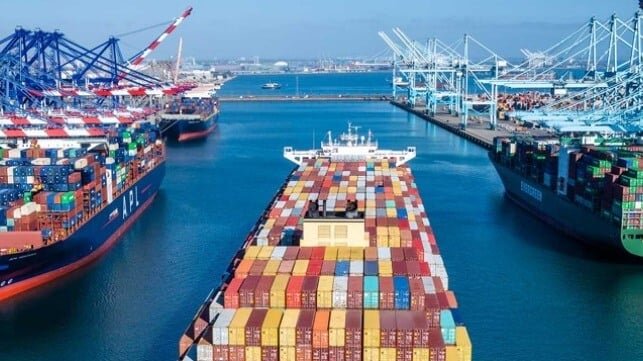The Effects of Tariffs on U.S. Trade Deficit
The U.S. government recently released official data for trade numbers, imports, and exports in April, confirming what port officials had predicted – a significant drop in volumes due to tariffs. However, this decline also resulted in a record decrease in the U.S. trade deficit. This data coincided with President Donald Trump’s discussions with China’s leader, Xi Jinping, where both sides indicated progress towards a trade deal.
Trump initiated the trade war and imposed tariffs with the aim of reducing the U.S. trade deficit, and the numbers for April reflected the initial impacts. The U.S. trade deficit saw a sharp decrease to $61.6 billion, the lowest in 19 months. Additionally, the goods trade deficit dropped by over 46 percent to $87.4 billion.
Analysts noted that shippers had expedited moving goods, particularly imports, into the U.S. in the first quarter to beat the tariffs, a trend supported by major ports reporting robust volumes during that period. However, by April and May, ports like Los Angeles experienced a rapid decline in volumes, reaching levels 30 percent below those of 2024.
The official government data confirmed this trend, showing imports down by more than 16 percent in April, with goods specifically decreasing by nearly 20 percent. Household goods imports, including electronics, saw a $3.5 billion decline, while industrial supplies, materials, and vehicle imports also plummeted.
On a positive note, U.S. goods exports surged to a record $190 billion in April, driven by industrial supplies, finished metals, and crude oil shipments.
During a press briefing in the Oval Office, Trump mentioned a productive call with China’s leader regarding trade and implied ongoing discussions on the terms of an agreement. While Trump mentioned “We have a deal,” China’s official statement suggested further talks. Plans for reciprocal visits between Trump and Xi Jinping were also discussed.
Meanwhile, Alphaliner reported a significant increase in container ship traffic through the Panama Canal, setting a new record in the first five months of the year. The rise was primarily attributed to smaller Neo Sub-Panamax vessels, marking a 10 percent year-over-year increase.
Speculations arose about potential rush shipments into the U.S. amid uncertainties surrounding a formal trade deal between the U.S. and China. Carriers were reportedly adjusting vessel positions to meet anticipated demand. This adjustment came as U.S. ports noted a rise in blanked sailings for May and June, reminiscent of the early pandemic days in 2020.

